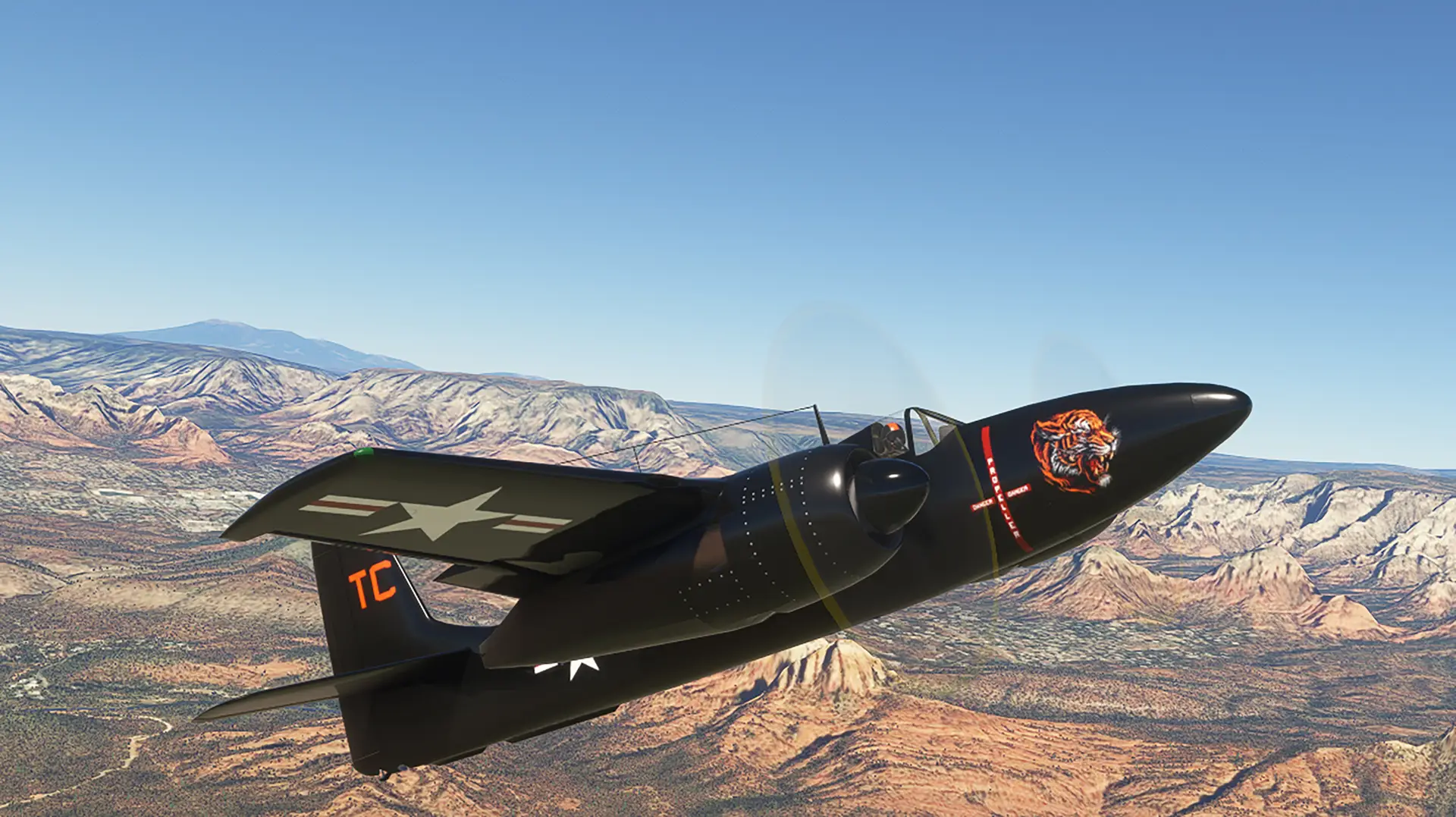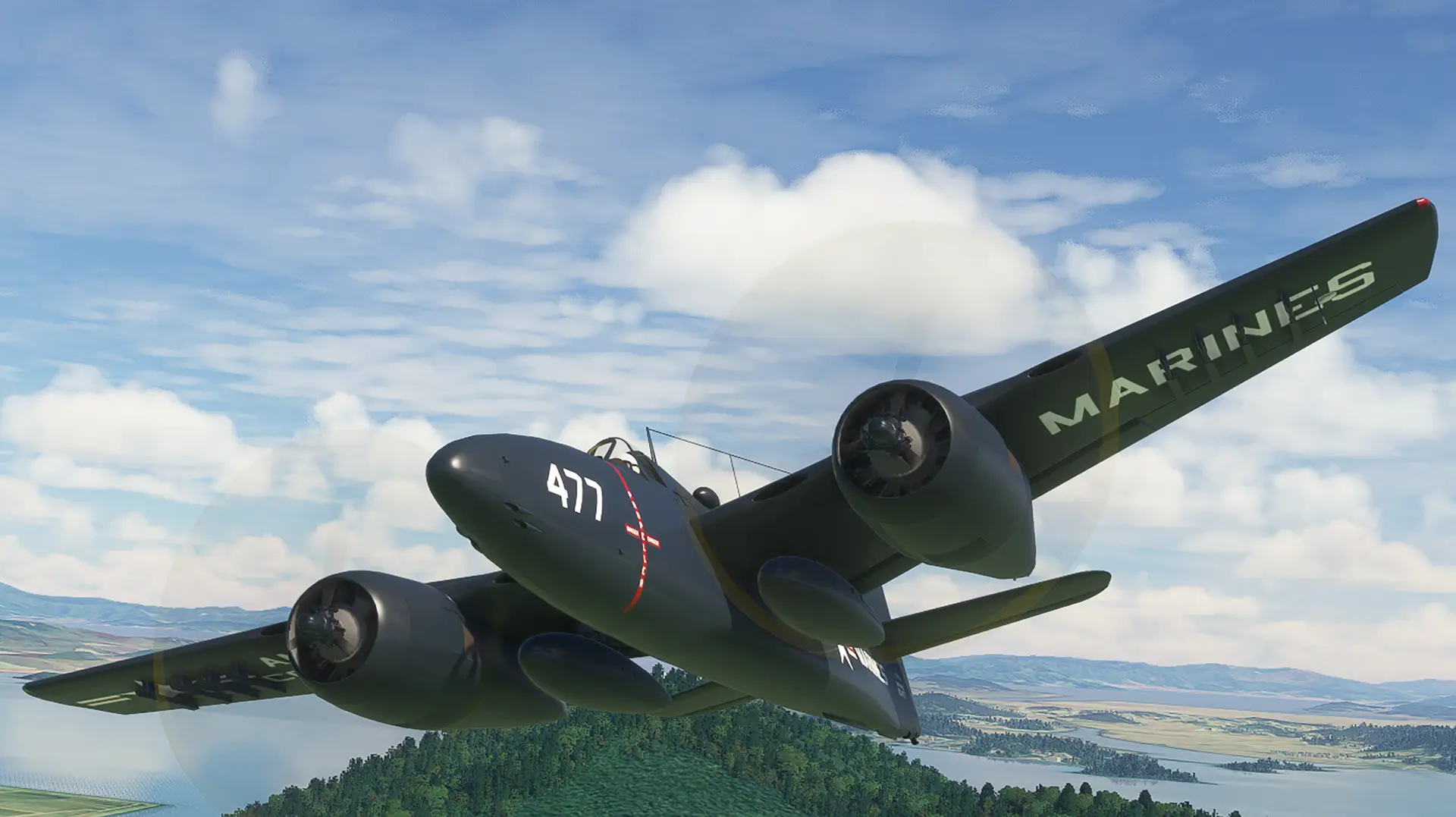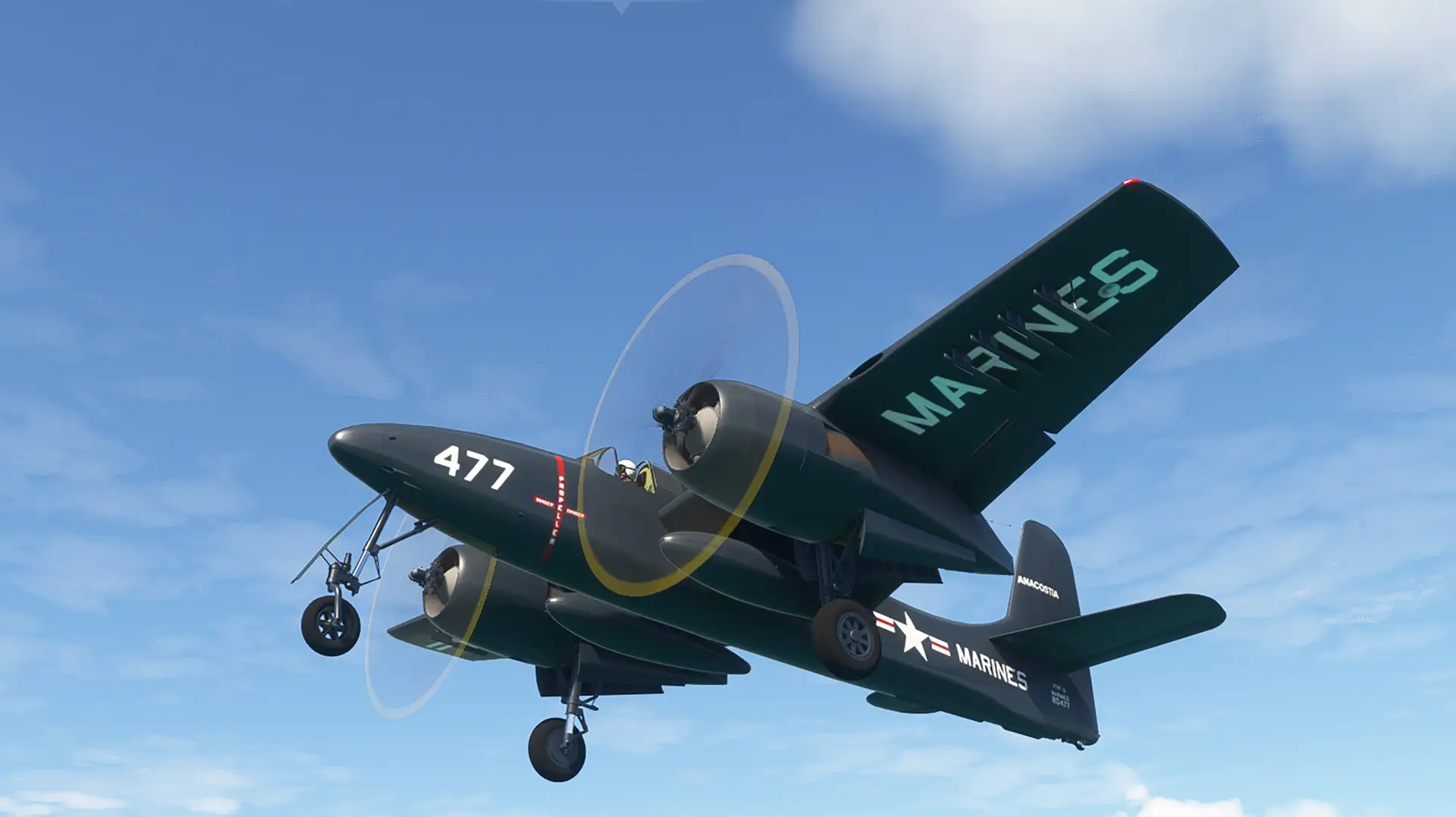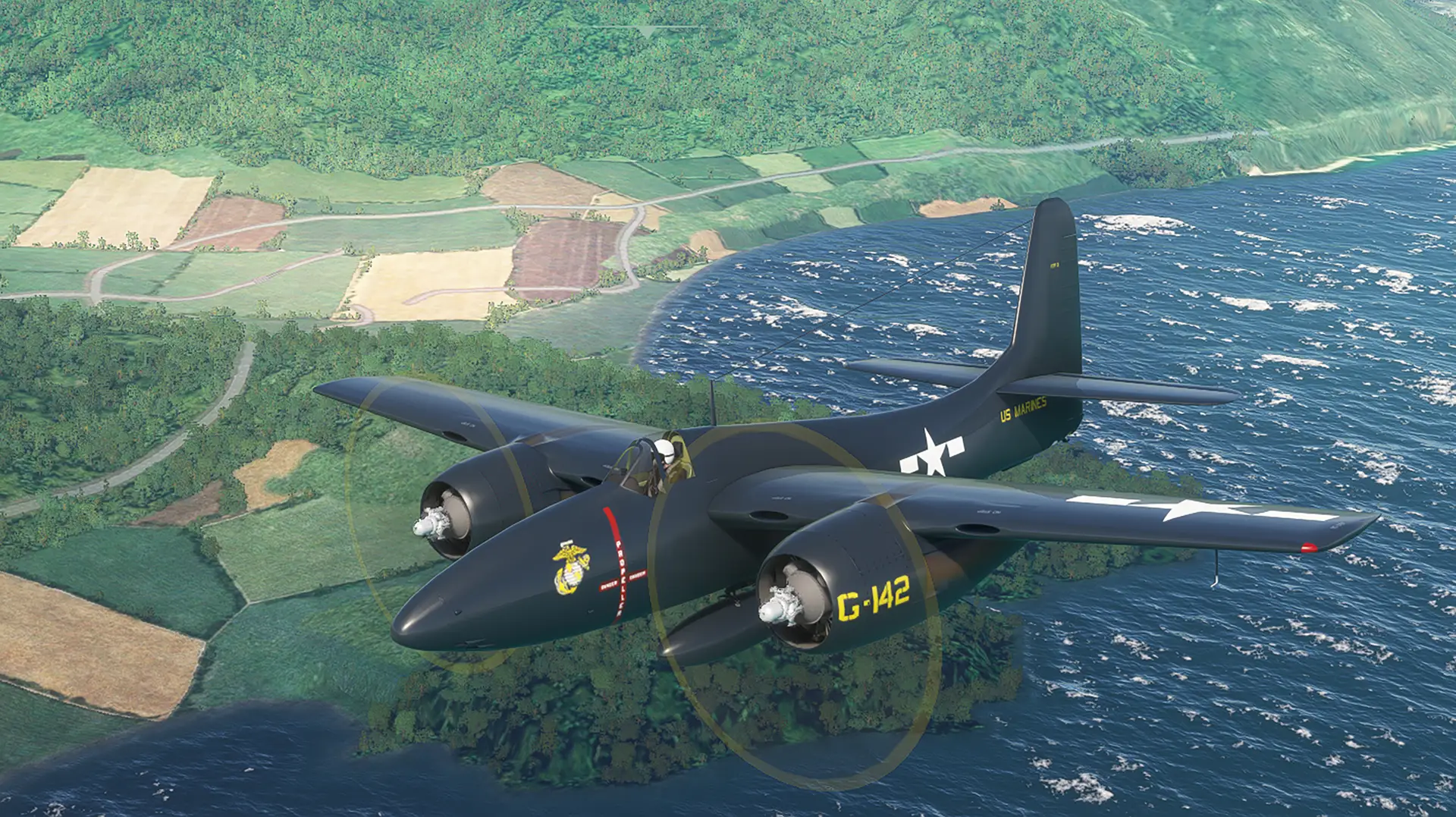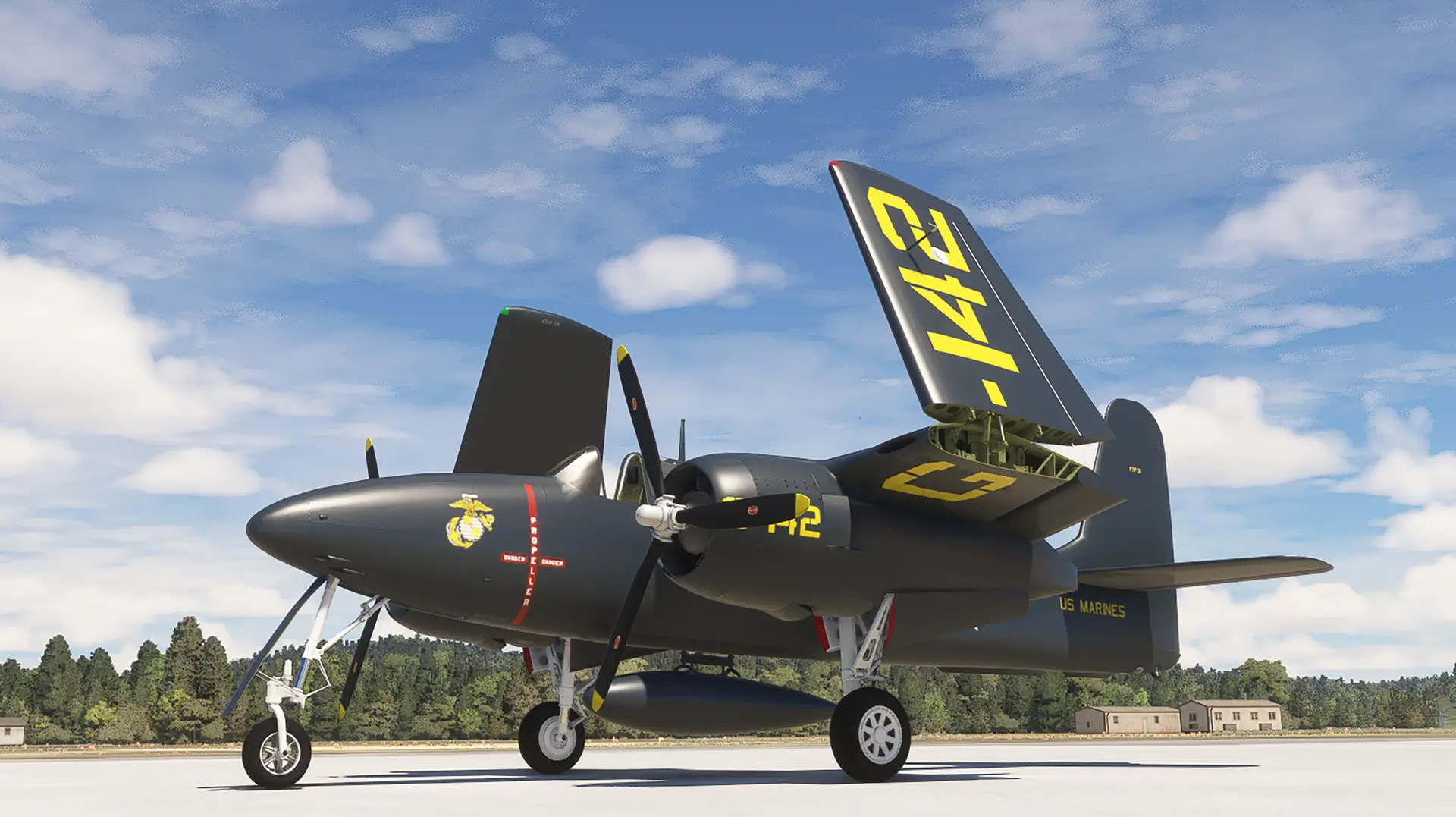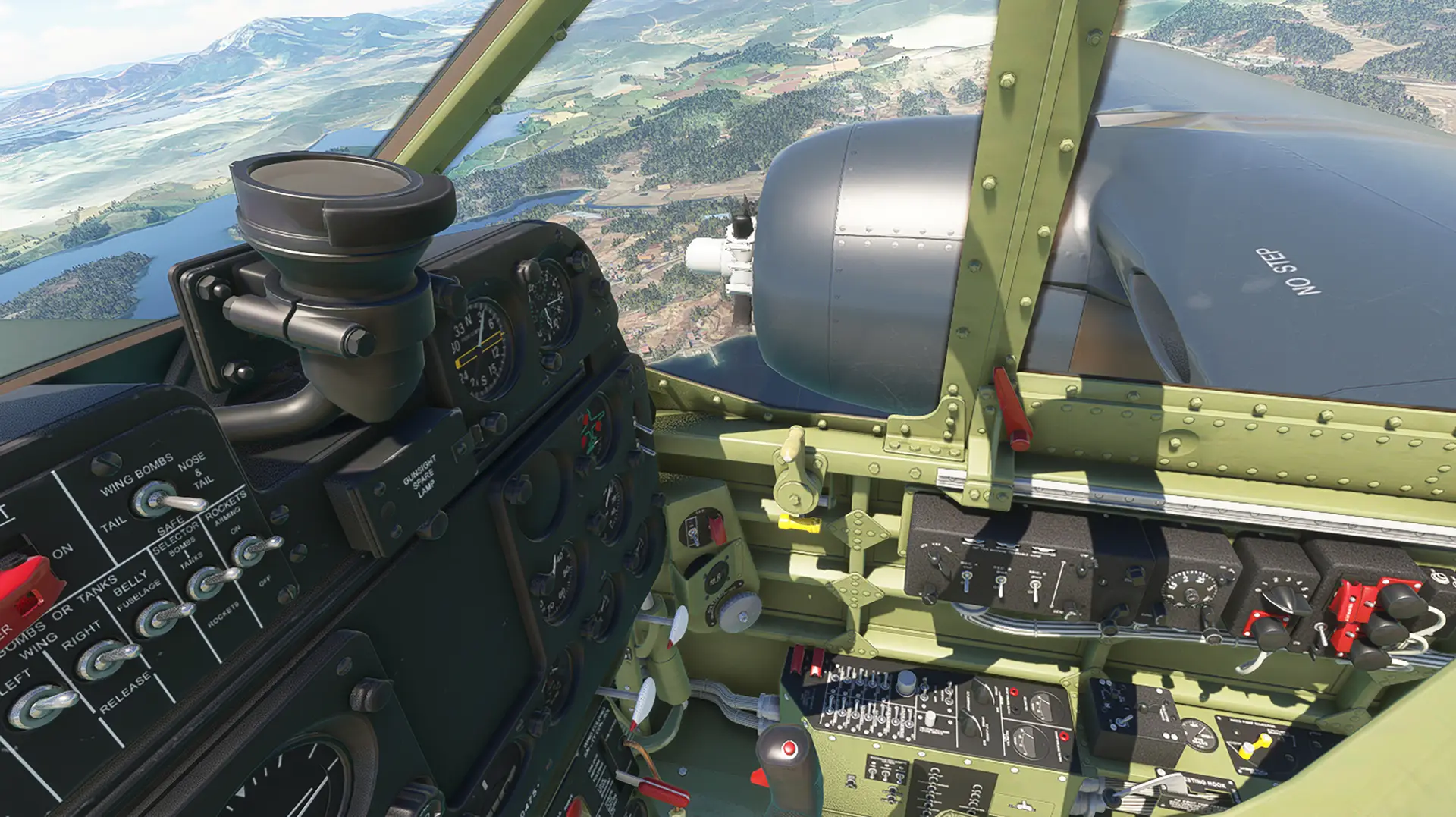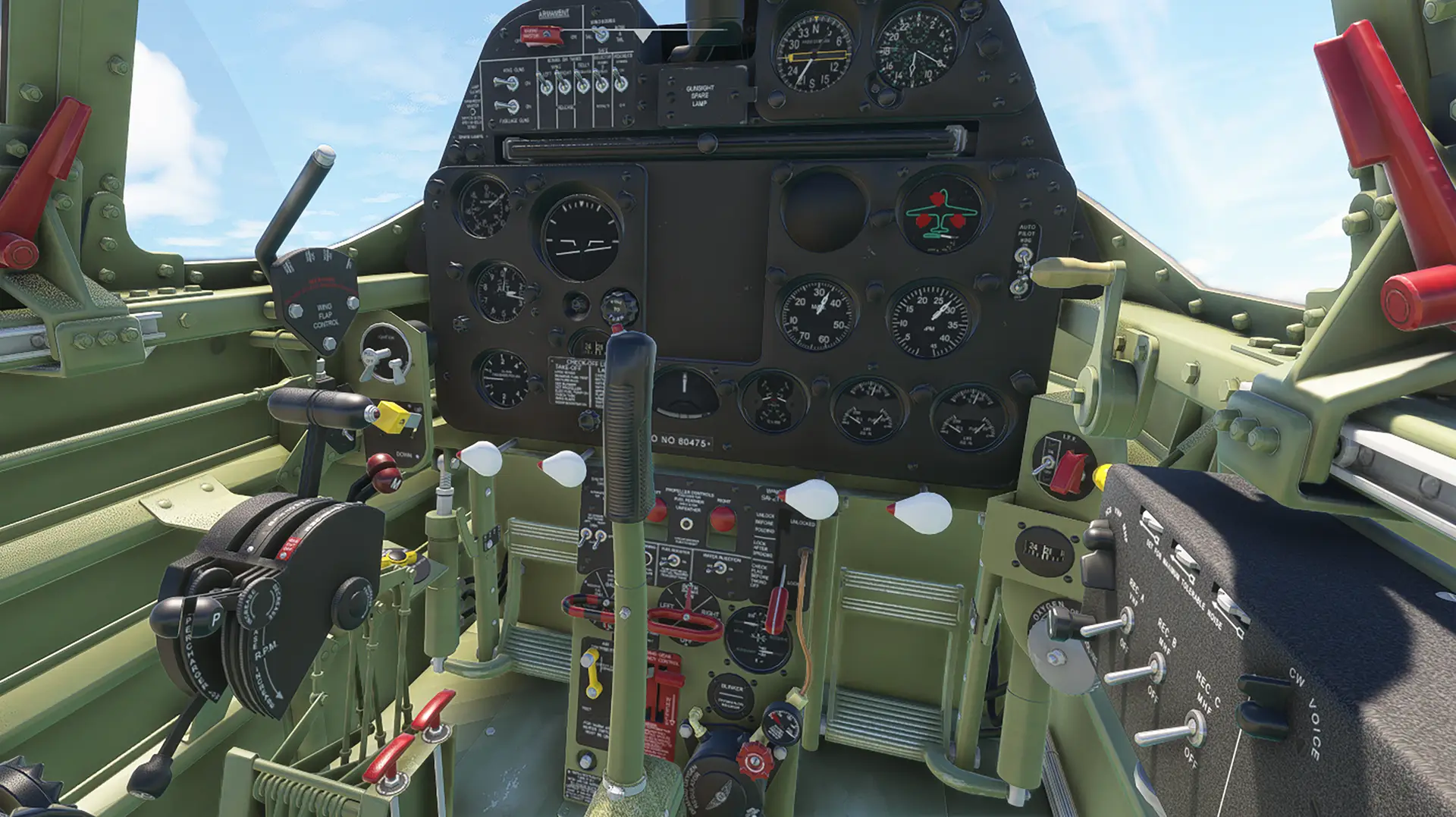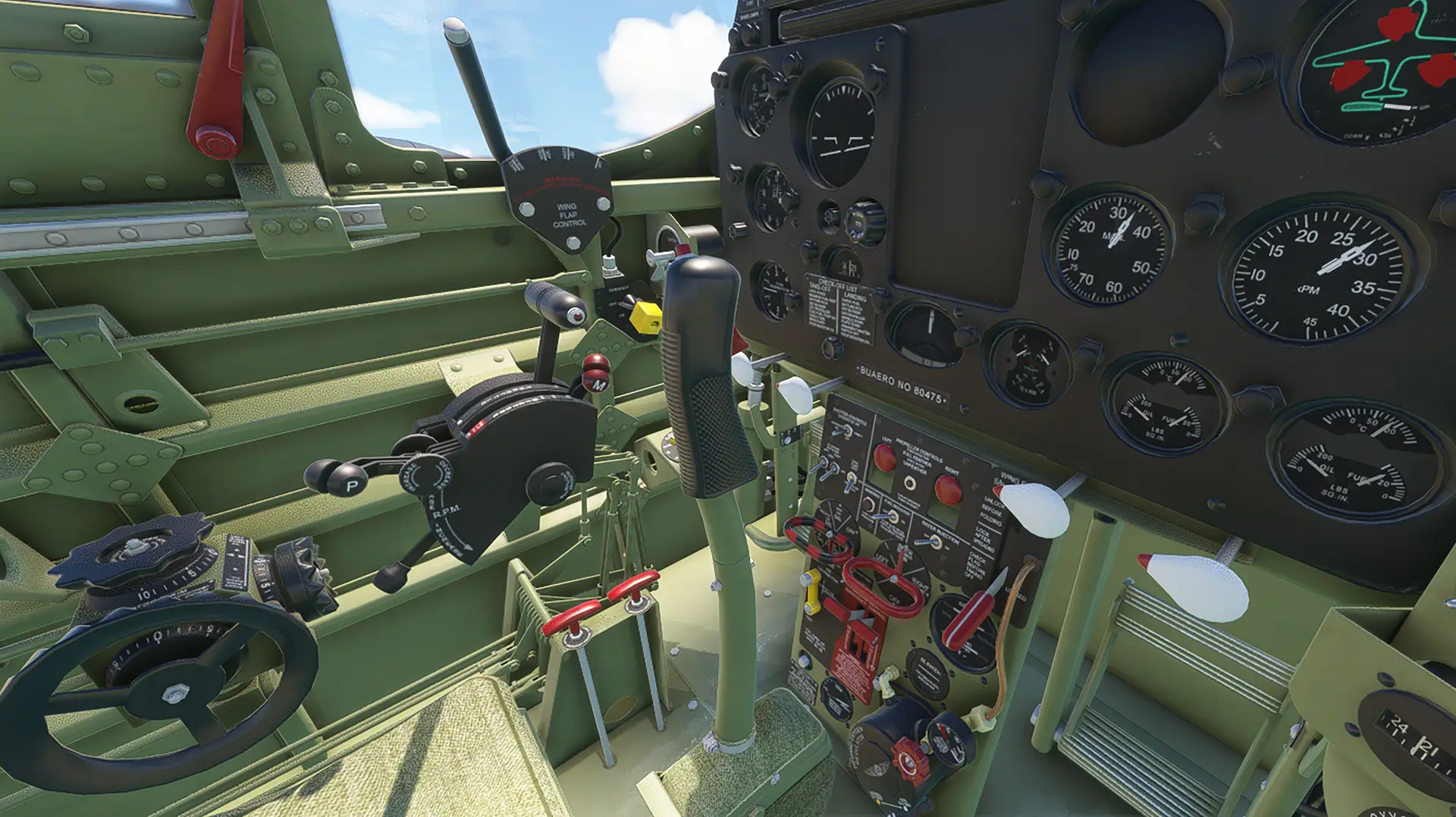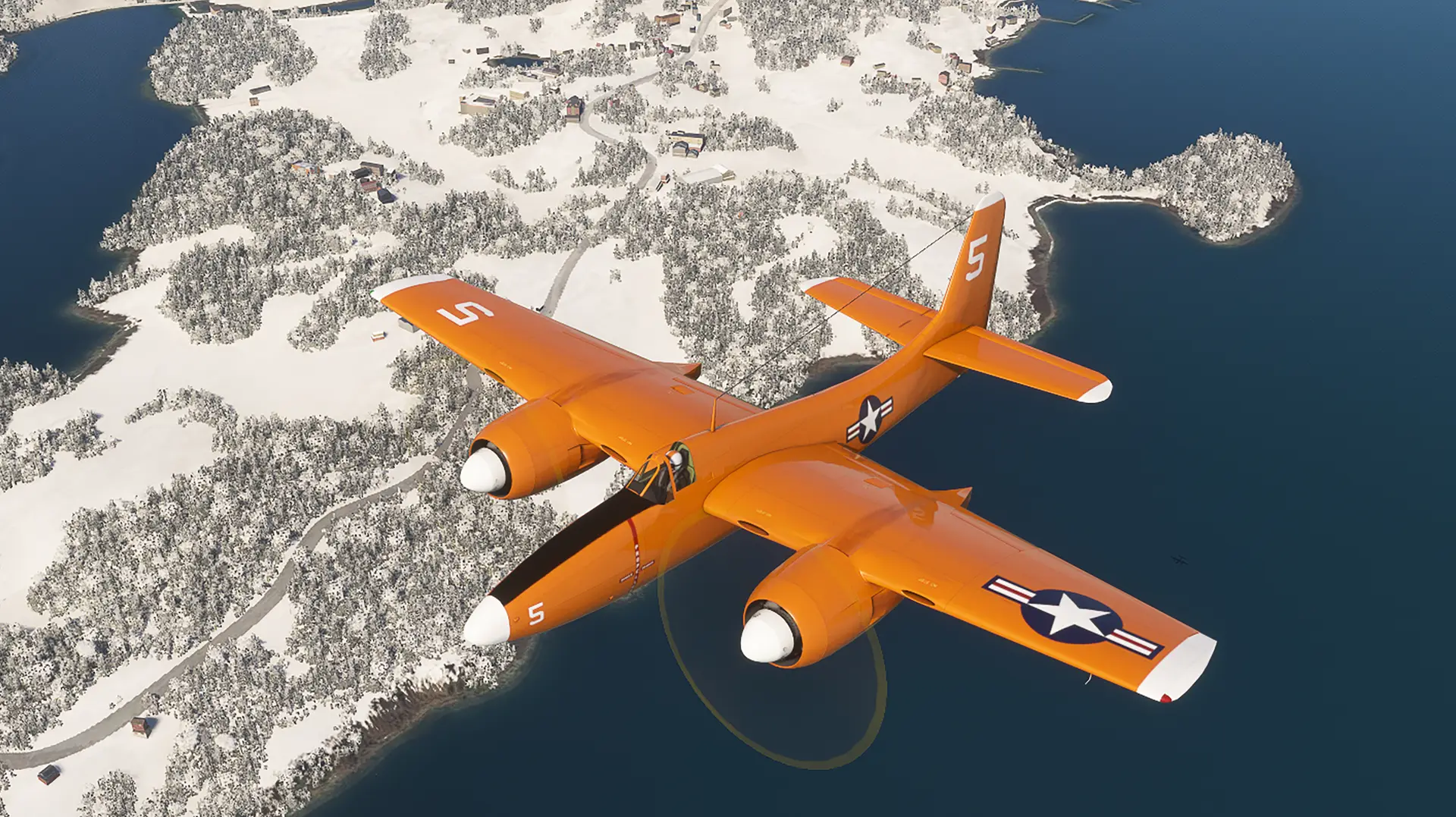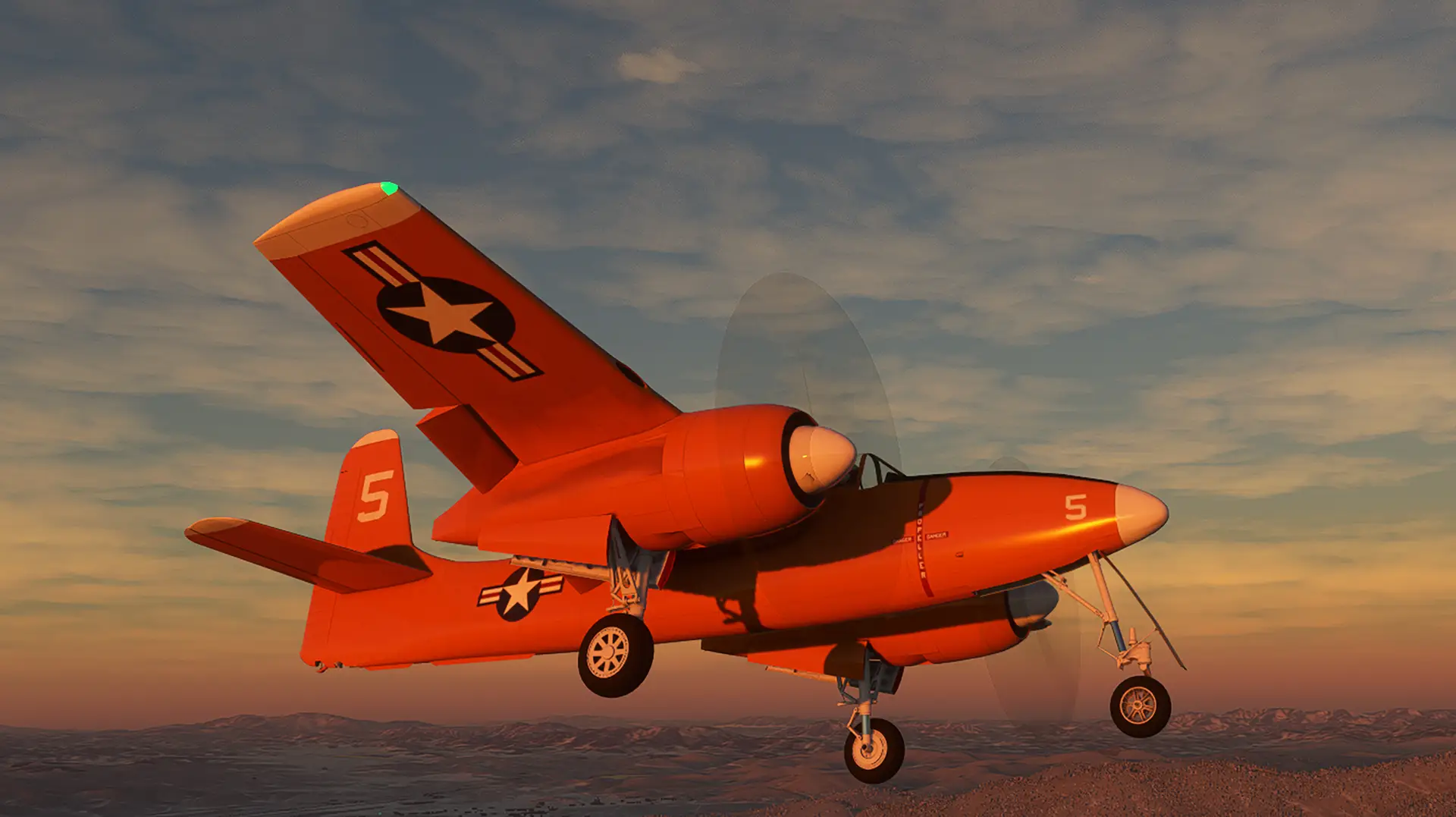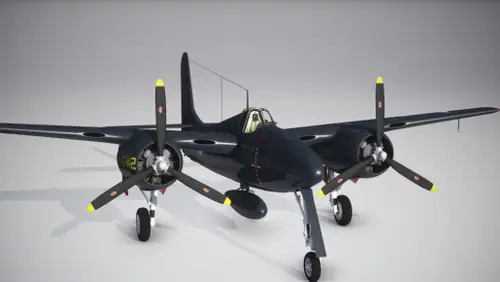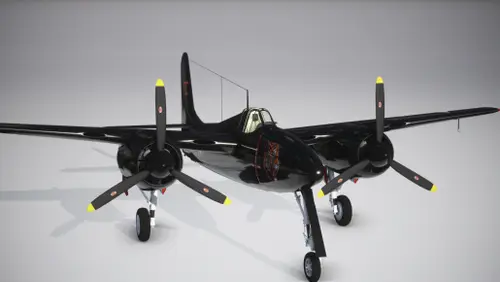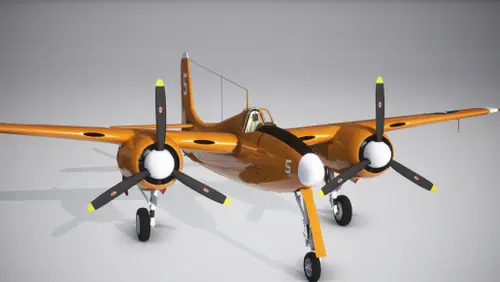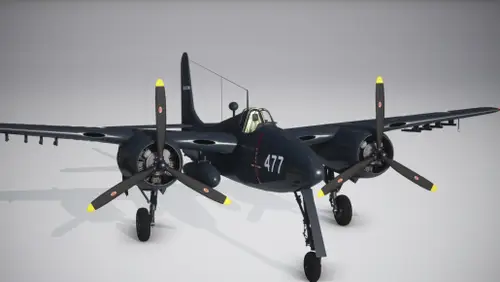The F7F-3 Tigercat is an American single-seat, twin-engine, multi-role combat aircraft that was operated by the U.S. Navy and the U.S. Marine Corps. The prototype of the F7F took its maiden flight on November 2, 1943 and entered service at the end of World War II. 364 F7F Tigercats were manufactured in several variants.
The F7F was developed to be a high-performance, high-speed, long-range, carrier-capable fighter / attack platform. The first twin-engine fighter aircraft operated by the U.S. Navy, the Tigercat entered service too late in World War II to see combat. A nighttime variant of the F7F, operated by the Marine Corps, saw limited combat during the Korean War.
The F7F-3 features a high-mounted main wing that folds for carrier stowage, a standard empennage, and a retractable tricycle undercarriage. When combat operational, it was armed with two 20-millimeter cannons and two .50-caliber machine guns. It could carry an assortment of external stores under its wing and fuselage, including bombs, rocket pods, torpedoes, and external fuel tanks. Configurations included a single external fuel tank, two external fuel tanks, or no external fuel tanks (relying solely on internal fuel).
The F7F-3 Tigercat measures 45 feet, 4 inches in length, stands 16 feet, 7 inches tall, and has a wingspan of 51 feet. It is powered by two wing-mounted dual-row, 18-cylinder, radial piston engines that each generate up to 2,100 horsepower that turn 3-blade, constant-speed propellers. The Tigercat has a range of 1,200 miles, a service ceiling of 40,700 feet above sea level, and a maximum speed of 435 miles per hour.
